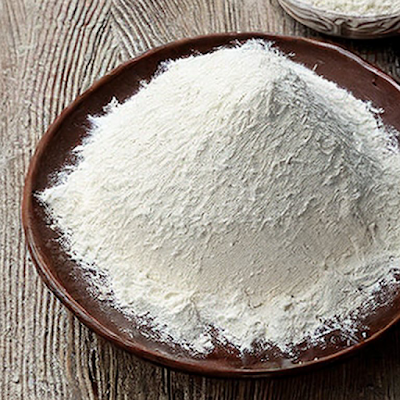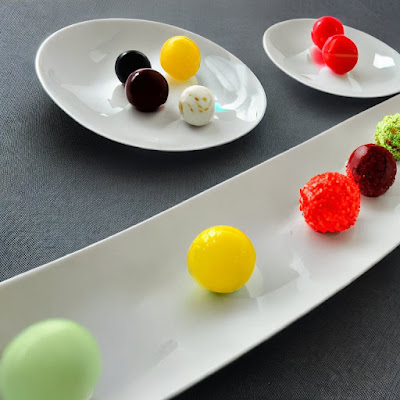What is Alginate Made Of?
Alginate is a polysaccharide that is extracted from brown seaweed. It is composed of repeating units of two monosaccharides: beta-D-mannuronic acid and alpha-L-guluronic acid. These monosaccharides are joined together through glycosidic bonds to form long chains of polysaccharide.
One of the unique properties of alginate is its ability to form gels in the presence of divalent cations such as calcium ions.
When alginate is dissolved in water, the individual chains of polysaccharide can move freely. However, when calcium ions are added, they bind to the negative charges on the mannuronic acid and guluronic acid residues, causing the alginate chains to crosslink and form a three-dimensional network. This network traps water within its structure, resulting in the formation of a gel.
The strength of the alginate gel depends on the concentration of alginate and the concentration of calcium ions. Higher concentrations of alginate and calcium ions result in a stronger gel. The gelation process is reversible, and the gel can be melted by increasing the temperature or decreasing the concentration of calcium ions.
Alginate is a versatile and biocompatible polymer with a wide range of applications. Its ability to form gels in the presence of divalent cations and its reversibility make it particularly useful in a variety of industries.
What is Alginate Also Known As?
Alginate is also known by a number of other names, including algin, alginic acid, and alginic acid sodium salt. The term "alginate" is often used to refer specifically to the sodium salt form of alginic acid, which is the form that is most used in industry.
What is an Alginate Used For?
1) Alginate is a polysaccharide that has a variety of uses in different industries. In the food industry, it is used as a thickening agent and as a stabilizer in products such as ice cream and yogurt.
It is used to stabilize mousses, create gels and thickened sauces, and to make low-fat or fat-free versions of dairy products. It is widely used in the food industry and can be found in a variety of products including mayonnaise, salad dressings, and bakery products.
2) In molecular gastronomy is commonly used to create edible gels and foams. Alginate is usually included in molecular gastronomy kits to create "spherification," a technique in which a liquid is coated with a thin layer of alginate and then mixed with a calcium salt to create a semi-solid, gel-like sphere.
 |
| Photo Credit: Molecule-R–Molecular-Gastronomy-Starter-Kit |
3) In the pharmaceutical industry, it is used as a drug delivery system and as a matrix for tissue engineering.
4) In industrial sector, it is used as a sizing agent in textiles and as a printing thickener.
5) Alginate has also been studied for its potential use in environmental applications, such as removing heavy metals from water and capturing oil spills. It has also been used as a natural alternative to synthetic polymers in the production of biodegradable plastics.
What Does Alginate Do to Your Body?
In the body, alginate is not digested and passes through the gastrointestinal tract unchanged.
1) One of the main uses of alginate in the pharmaceutical industry is as a drug delivery system. Alginate can be formulated into various drug delivery systems such as capsules, tablets, and gels. When taken orally, alginate forms a gel in the presence of divalent cations such as calcium ions, which can help to protect the drug from degradation in the stomach and to release the drug in a controlled manner in the intestine.
2) In addition to its use as a drug delivery system, alginate has also been studied for its potential use in the treatment of a variety of gastrointestinal disorders.
3) ALGINATE has been shown to be effective at reducing acid reflux and at promoting the healing of ulcers in the esophagus and stomach.
4) It has also been shown to be effective at reducing the symptoms of irritable bowel syndrome and at reducing the severity of diarrhea.
5) Alginate has also been studied for its potential use in the treatment of obesity. It has been shown to reduce food intake and to increase feelings of fullness in humans. In animal studies, alginate has been shown to reduce body weight and to improve the metabolic profile.
6) In addition to its potential therapeutic uses, alginate has also been shown to have several other potential health benefits. It has been shown to have antioxidant and anti-inflammatory properties, and it has been shown to have a prebiotic effect, promoting the growth of beneficial bacteria in the intestine.
Alginate appears to have several potential health benefits, particularly in the treatment of gastrointestinal disorders and in the management of obesity. Further research is needed to fully understand the mechanisms behind these effects and to determine the optimal doses and formulations of alginate for therapeutic use.
REFERENCES:
Amos Nussinovitch (Author), Madoka Hirashima (Author). 2013. Cooking Innovations: Using Hydrocolloids for Thickening, Gelling, and Emulsification, 1st Edition. CRC Press. ASIN: B00OD4ENAW
G O Phillips (Editor), P A Williams (Editor). 2020. Handbook of Hydrocolloids (Woodhead Publishing Series in Food Science, Technology and Nutrition), 3rd Edition. Woodhead Publishing. ISBN-10:0128201045. ISBN-13:978-0128201046
Stubbe, Birgit; Mignon, Arn; Declercq, Heidi; Vlierberghe, Sandra Van; Dubruel, Peter. 2019. Development of Gelatin-Alginate Hydrogels for Burn Wound Treatment. Macromolecular Bioscience. 19 (8): 1900123. doi:10.1002/mabi.201900123. ISSN 1616-5195. PMID 31237746. S2CID 195355185.




No comments:
Post a Comment